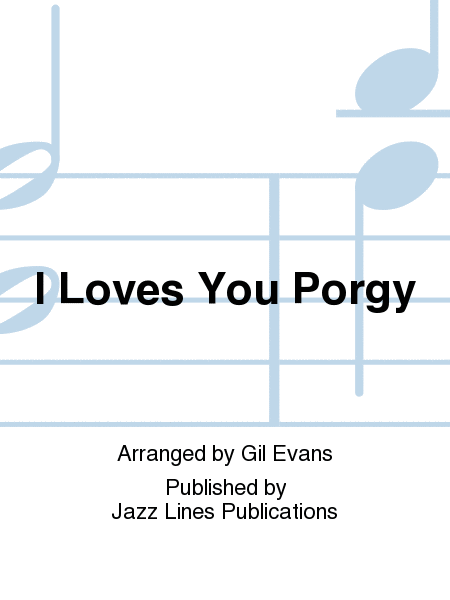I Loves You Porgy
As Recorded by Miles Davis and Gil Evans on 1958's Porgy and Bess
-
Ships in 2 to 3 weeks
Details
Description
SKU: JL.JLP-7554S
As Recorded by Miles Davis and Gil Evans on 1958's Porgy and Bess. Edited by Dylan Canterbury, Rob DuBoff, and Jeffrey Sultanof. Arranged by Gil Evans. Range: Trumpet 1: G5; Trombone 1: G4. Ballad. Score. Published by Jazz Lines Publications (JL.JLP-7554S).Much like 'Bess, You Is My Woman Now,' 'I Loves You Porgy' serves as a declaration of love between the title characters of the Gershwin/Heyward opera 'Porgy and Bess.' Gil Evans's arrangement for Miles Davis does an outstanding job of capturing the intimacy and vulnerability present in the original version. While most of the orchestra sustains an extended tremolo for most of the first portion of the melody, the alto flutes play a counter line that implies a three-over-four pulse in the tempo. The solo trumpet enters with the melody at measure 5. The soloist is encouraged to play the melody fairly loosely, but as the section is not fully rubato, it is important that they do not lose track of the tempo during this section. The melody switches over to the woodwinds and horns at measure 14, orchestrated in typical Evans fashion: dense, full, and dissonant yet warm. The trombones take over the melody at measure 18, arranged in a slightly more conventional style, before the rest of the orchestra enters to set up the trumpet solo at measure 24. During the improvised trumpet solo, the ensemble should swell and decay in sync with one another in order to avoid losing the interest of the audience. Although a chord symbol has been included for the trumpet soloist, for all intents and purposes this section is completely modal, based around an F major scale rather than a traditional chord sequence. It is important for the soloist to keep this in mind, as they should attempt to stay true to the nature of the arrangement.

 Share
Share